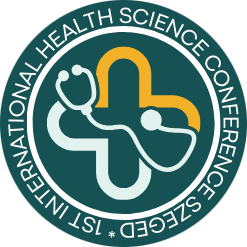Dr. Emese Sánta1, Dr. habil Bálint Bánfai2, Prof. Dr. József Betlehem3, Dr. Angéla Somogyi4
1. Vice-dean, Head of Department, Assistant lecturer, Széchenyi University, Faculty of Health and Sports Sciences, Elméleti Egészségtudományi és Ápolástani Tanszék, Győr
2. Associate professor, University of Pécs, Faculty of Health Sciences, Institute of Emergency Care, Pedagogy of Health and Nursing Sciences, Pécs
3. Vice-rector for General Affairs, Strategy and Connections, Full Professor, University of Pécs, Faculty of Health Sciences, Institute of Emergency Care, Pedagogy of Health and Nursing Science, Pécs
4. Dean, Head of Department, Széchenyi University, Faculty of Health and Sports Sciences, Elméleti Egészségtudományi és Ápolástani Tanszék, Győr
Introduction: Prehospital patient care involves several risk factors that can impact the health of workers. The declining quality of life for ambulance workers can negatively impact patient care and in severe cases may lead to career abandonment.
Objective: The aim is to review the results of surveys carried out over the last 15 years to model the health of ambulance workers and the main factors that influence it.
Material and method: A systematic review with qualitative elements. The presentation will review the results of selected cross-sectional surveys from 2010 onwards in the light of change. The surveys were anonymous and voluntary, targeting rescue workers aged 18 and over with at least one year of experience. Data was collected via standard and self-designed questionnaires and analyzed using descriptive and correlational statistics, with a significance level of p<0.05.
Results: Rescue workers report low-stress levels unaffected by rescue type (ground, air, water) (p=0.064). The SF-36 questionnaire indicates that respondents perceive their health as better than the national average, though „General health” has declined over 10 years while „Physical” and „Emotional health” have improved. Almost 70% have a BMI above normal, leading to musculoskeletal issues, mainly in the waist and back. The COVID pandemic has tripled severe PTSD rates among ambulance workers.
Conclusions: Continuous monitoring of rescue workers’ health is essential to maintaining their physical and mental health, preserving their quality of life, and consequently, the quality of patient care.
Key words: ambulance workers, health status, physical health, mental health


